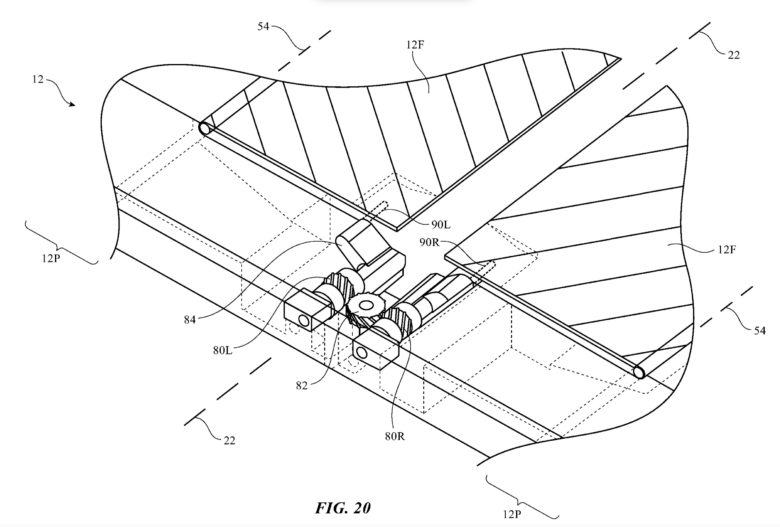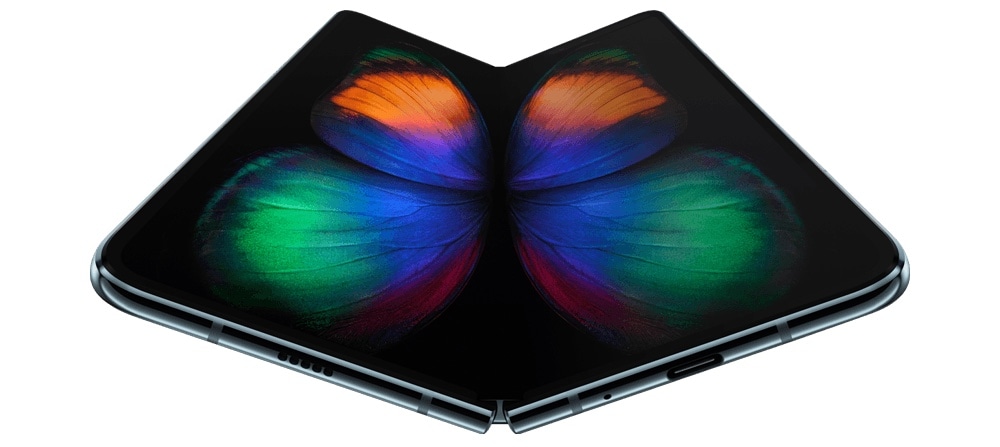It’s not yet clear whether foldable phones are a temporary gimmick or the future of mobile devices. But Apple’s certainly interested — and in a newly published patent, it describes its approach to solving one of the most often-raised problems with folding phones.
That problem? How to ensure that a foldable device doesn’t become creased or damaged when it folds. Early folding phones, such as Samsung’s troubled Galaxy Fold, have been plagued by this problem. But Apple engineers developed a solution that could help.
The Apple patent describes a special hinge mechanism with movable flaps. The patent notes, in typically dense patentese, that Apple has invented:
“An electronic device [with a] flexible display that overlaps an axis. The display may be supported by a housing. The housing may have first and second portions that rotate relative to each other about the axis. [Device] housing may be placed in an unfolded configuration to support the display in a planar state. The housing may also be placed in a folded configuration by rotating the first and second portions relative to each other. A hinge mechanism may be used to ensure adequate separation between the first and second portions when the housing is bent. Movable flaps may be retracted when the housing is bent to create room for a bent portion of the display.”
Apple invents folding iPhone screen — but would it work?

Photo: USPTO/Apple
The idea, essentially, is to have movable flaps that will extend to cover a gap when the device is open. These would then retract when the device is folded back up. By doing so, Apple hopes it could avoid some of the disastrous problems Samsung has suffered with its folding phone.
Samsung rushed ahead with the Galaxy Fold, its first folding phone, last year. However, it wound up canceling the device’s original April 26 launch date. The delay came after a number of reviewers noted problems with the Fold. Samsung then spent months retooling the device, although the finished results still aren’t particularly robust. Samsung went so far as to publish a video on how to care for the Galaxy Fold. The company warned that the folding display is very sensitive and should only be used with a light touch.
Apple has been investigating folding iPhones for a while now. It’s published a number of patents, although there’s been no official word of a folding iPhone (or iPad). There’s a chance that this granted patent could see the light of day. But the hinge could also be a possible point of failure for a folding device. In recent years, Apple designs for devices such as the iPhone have moved away from components like a physical Home button, which can fail after prolonged use. That is one possible reason why previous Apple patents, such as a pop-up joystick inside the iPhone, have never made it from patent to finished product.
Apple filed its special hinge folding patent in late 2016.
Via: MacRumors


